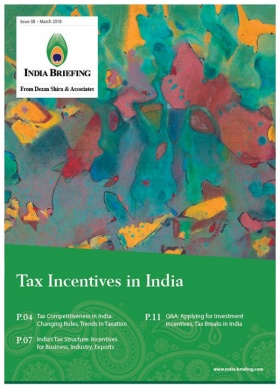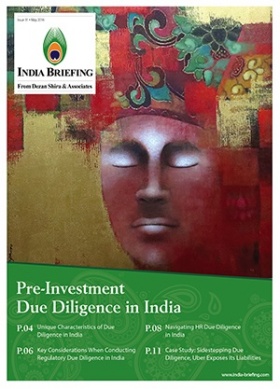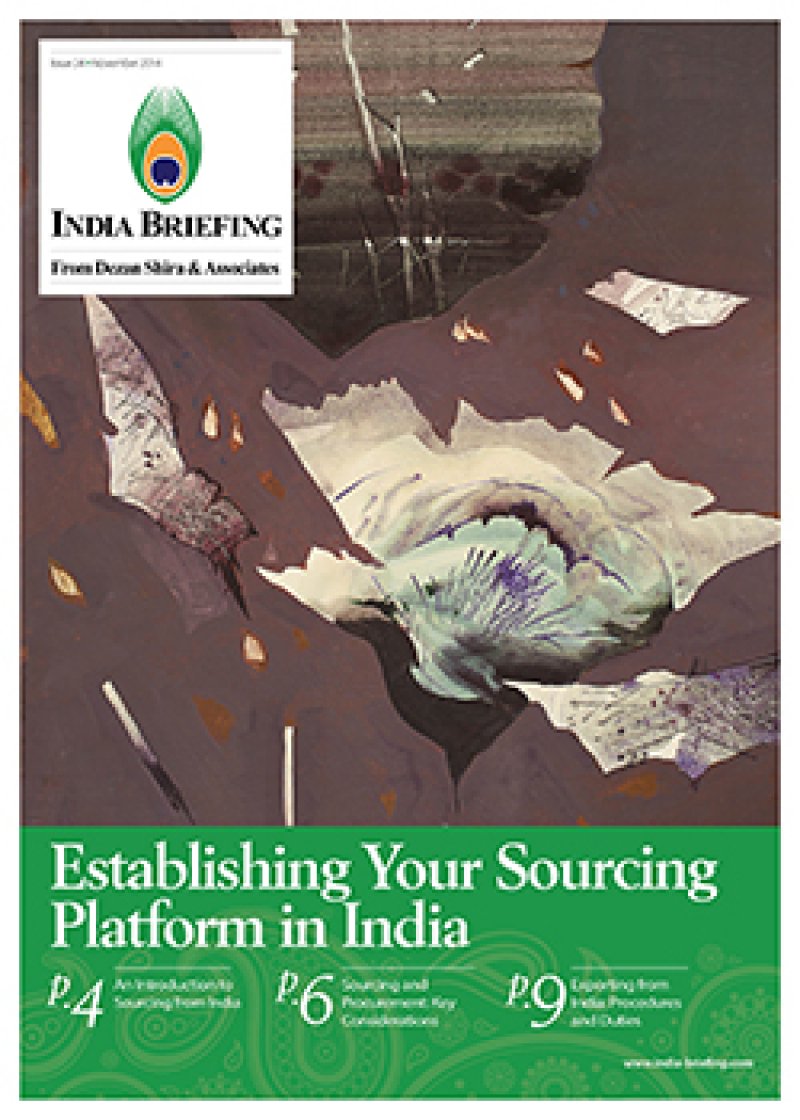Import and Export Licensing Procedures in India
To learn about establishing an export-import business in India, read our article here.
To view the latest trends on India’s exports and imports (FY2018-19), click here.
India’s import and export system is governed by the Foreign Trade (Development & Regulation) Act of 1992 (full text) and India’s Export Import (EXIM) Policy.
Import and export of all goods are free, except for the items regulated by the EXIM policy or any other law currently in force. Registration with regional licensing authority is a prerequisite for the import and export of goods. The customs will not allow for clearance of goods unless the importer has obtained an Import Export Code (IEC) from the regional authority.
Import Policy
The Indian Trade Classification (ITC)-Harmonized System (HS) classifies goods into three categories:
- Restricted
- Canalized
- Prohibited
Goods not specified in the above mentioned categories can be freely imported without any restriction, if the importer has obtained a valid IEC. There is no need to obtain any import license or permission to import such goods. Most of the goods can be freely imported in India.
Licensed (Restricted) Items
Restricted items can be imported only after obtaining an import license from the relevant regional licensing authority. The goods covered by the license shall be disposed of in the manner specified by the license authority, which should be clearly indicated in the license itself. The list of restricted goods is provided in ITC (HS). An import license is valid for 24 months for capital goods, and 18 months for all other goods.
Canalized Items
Canalized goods are items which may only be imported using specific procedures or methods of transport. The list of canalized goods can be found in the ITC (HS). Goods in this category can be imported only through canalizing agencies. The main canalized items are currently petroleum products, bulk agricultural products, such as grains and vegetable oils, and some pharmaceutical products.
Prohibited Items
These are the goods listed in ITC (HS) which are strictly prohibited on all import channels in India. These include wild animals, tallow fat and oils of animal origin, animal rennet, and unprocessed ivory.
Export Policy
Just like imports, goods can be exported freely if they are not mentioned in the classification of ITC (HS). Below follows the classification of goods for export:
- Restricted
- Prohibited
- State Trading Enterprise
Restricted Goods
Before exporting any restricted goods, the exporter must first obtain a license explicitly permitting the exporter to do so. The restricted goods must be exported through a set of procedures/conditions, which are detailed in the license.
Prohibited Goods
These are the items which cannot be exported at all. The vast majority of these include wild animals, and animal articles that may carry a risk of infection.
State Trading Enterprise (STE)
Certain items can be exported only through designated STEs. The export of such items is subject to the conditions specified in the EXIM policy.
Types of Duties
There are many types of duties that are levied in India on imports and exports. A list of these duties follows below:
Basic Duty
Basic duty is the typical tax rate that is applied to goods. The rates of custom duties are specified in the First and Second Schedules of the Customs Tariff Act of 1975. The First Schedule contains rates of import duty, and the second schedule contains rates of export duties. Most of the items in India are exempt from custom duty, which is generally levied on imports.
The first schedule contains two rates: Standard rate and preferential rate. The preferential rate is lower than the standard rate. When goods are imported from a place specified by the central government (CG) for lower rates, the preferential rate is applicable. In any other case, the standard rate will be applicable. If the CG has signed a trade agreement with the country of origin, then the CG may opt to charge a lower basic duty than indicated in the first schedule.
IGST and Compensation Cess
Additional duties of customs, commonly referred to as the Countervailing Duty (CVD) and Special Additional Duty of Customs (SAD), has been be replaced by the levy of the Integrated Goods and Services Tax (IGST), barring a few exceptions, such as pan masala and certain petroleum products. The IGST replaces the previous system of federal and state categories of indirect taxation.
A Customs Duty calculator is made available on the online portal of excise and customs, the ICEGATE website. There are seven rates prescribed for IGST– Nil, 0.25 percent, 3 percent 5 percent, 12 percent, 18 percent, and 28 percent. The actual rate applicable to an item will depend on its classification and will be specified in Schedules notified under Section 5 of the IGST Act, 2017.
Further, a few items such as aerated water products, tobacco products, and motor vehicles, among others, will attract an additional levy of the GST Compensation Cess, over and above IGST. The Cess is calculated on the transaction value or the price at which the goods are sold.
The Goods and Services Tax (Compensation to States) Act, 2017 was enacted to levy Compensation Cess for providing compensation to Indian states for the loss of revenue arising on account of implementation of the Goods and Services Tax from July 1, 2017.
The Compensation Cess on goods imported into India shall be levied and collected in accordance with the provisions of Section 3 of the Customs Tariff Act, 1975, at the point when duties of customs are levied on the said goods under Section 12 of the Customs Act, 1962, on a value determined under the Customs Tariff Act, 1975.
Anti-Dumping Duty
This is levied on specific goods imported from specified countries – including the US – to protect Indian industries. India can impose duties up to, but not exceeding, the margin of dumping, or the difference between the normal value and the export price.
Safeguard Duty
A safeguard duty is a tariff designed to provide protection to domestic goods, favoring them over imported items. If the government determines that increased imports of certain items are having a significantly detrimental effect on domestic competitors, it may opt to levy this duty on those imports to discourage their proliferation.
However, the duty does not apply to articles imported from developing countries.
The government may exempt imports of any article from this duty. The notification issued by the government in this regard is valid for four years, subject to further extension. However, the total period cannot exceed 10 years from the date of first imposition.
Social Welfare Surcharge
The Education Cess and Secondary and Higher Education Cess on imported goods is now abolished and replaced by the Social Welfare Surcharge. This surcharge will be levied at the rate of 10 percent of the aggregate duties of customs, on imported goods.
Valuation
Customs duty is payable as a percentage of ‘Value’ which is known as ‘Assessable Value’ or ‘Customs Value.’ The Value may be either:
- ‘Value’ as defined in Section 14 (1) of the Customs Act; or
- ‘Tariff Value’ described under Section 14 (2) of the Customs Act.
Tariff Value – the Tariff Value is fixed by the Central Board of Indirect taxes and Customs (CBIC) for any class of imported goods or export goods. Authorities will consider the trend of value of the goods in question while fixing tariff value. Once fixed, the duty is payable as a percentage of this value.
The value of imported goods for the assessment of duty is determined in accordance with the provisions of Section 14 of 1962 and the Customs Valuation (Determination of Value of Imported Goods) Rules, 2007. According to the rules, the assessable value equal the transaction value of goods as adjusted for freight and cost of insurance, loading, unloading and handling charges.
In the assessable value, the following criteria are included:
- Commission and brokerage;
- Cost of container, which are treated as being one with the goods for customs purposes;
- Cost of packing – labour or materials;
- Materials, components, tools, etc. supplied by buyer;
- Royalties and license fees;
- Value of proceeds of subsequent sales;
- Other payment as condition of sale of goods being valued;
- Cost of transport up to place of importation;
- Landing charges; and,
- Cost of insurance.
The following costs are excluded from the assessable value:
- Charges for construction, erection, assembly, maintenance or technical assistance undertaken after importation of plant, machinery or equipment;
- Cost of transport after importation;
- Duties and taxes in India; and,
- Types of duties on exports and imports in India are covered in the Customs Tariff Act 1975. The Act provides all the laws and regulations related to customs in India.
Customs Handling Fee
The Indian government assesses a one percent customs handling fee on all imports in addition to the applied customs duty.
About Us
India Briefing is published by Asia Briefing, a subsidiary of Dezan Shira & Associates. We produce material for foreign investors throughout Eurasia, including ASEAN, China, Indonesia, Russia, the Silk Road, & Vietnam. For editorial matters please contact us here and for a complimentary subscription to our products, please click here.
Dezan Shira & Associates provide business intelligence, due diligence, legal, tax and advisory services throughout India and the Asian region. We maintain offices in Delhi and Mumbai and throughout China, South-East Asia, India, and Russia. For assistance with India investment issues or into Asia overall, please contact us at india@dezshira.com or visit us at www.dezshira.com.
- Previous Article India Market Watch: India’s High Currency Demonetization and Abu Dhabhi Global Market (ADGM) Woos Indian Investors
- Next Article India’s Idle Provident Fund Accounts to Accrue Interest Following Government Notification













